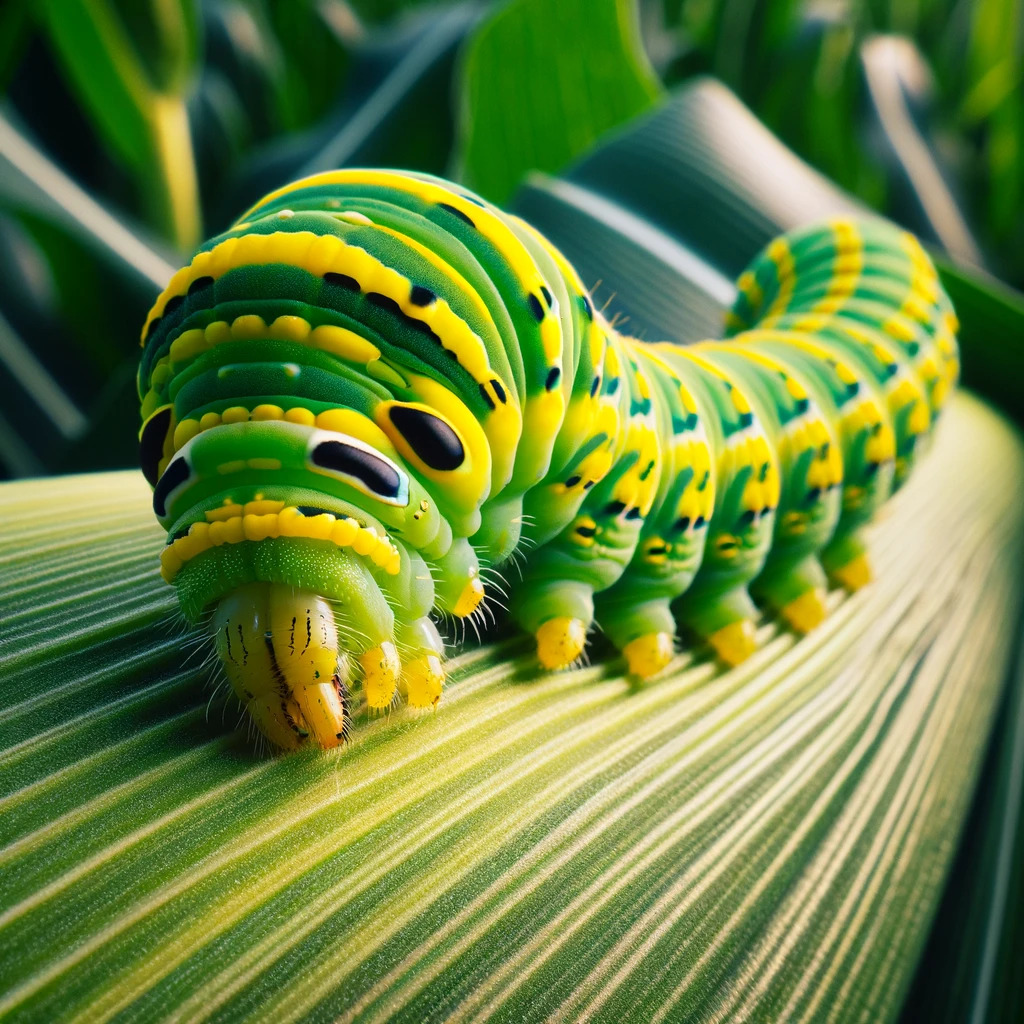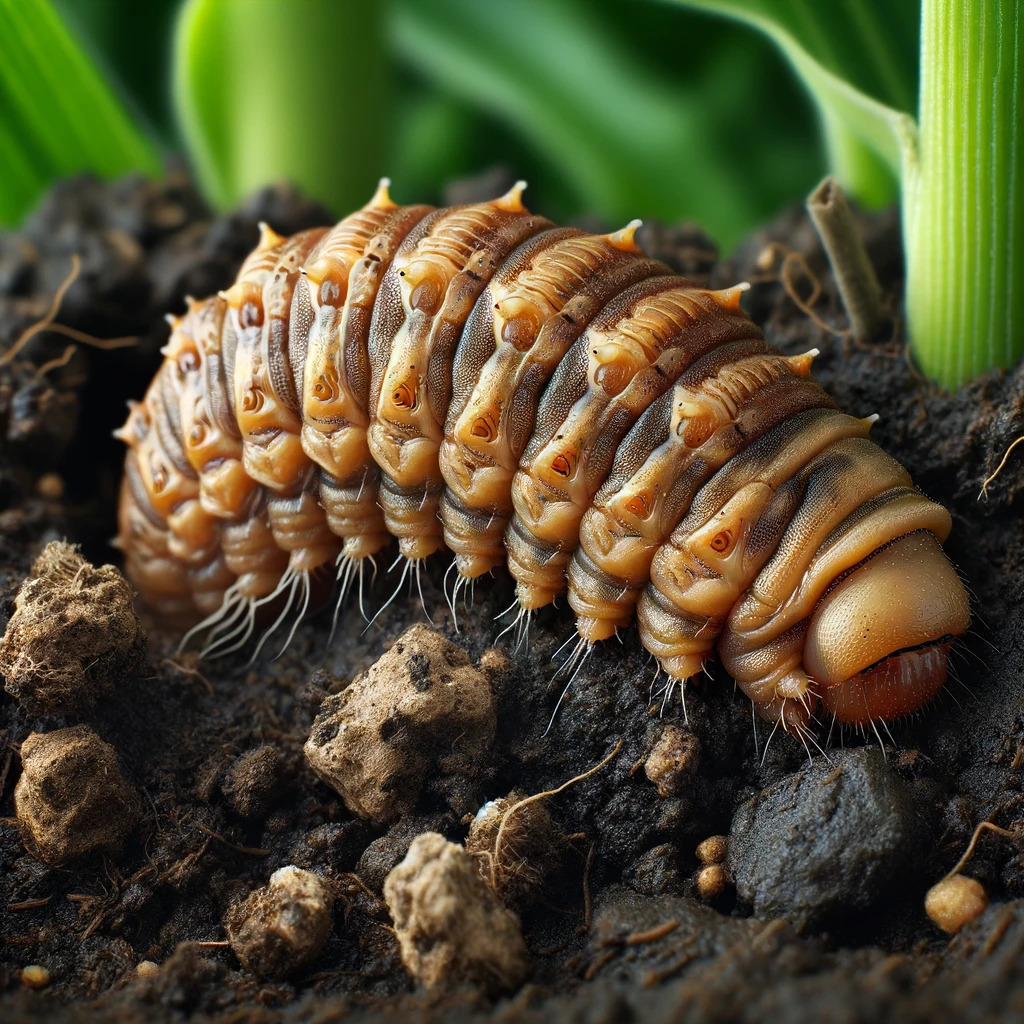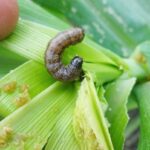The corn earworm, also known scientifically as Helicoverpa zea, is a common agricultural pest in North America. It is a species of moth whose larvae (caterpillars) are known for causing significant damage to a variety of crops, especially corn, hence its common name. It also affects other crops such as tomatoes, cotton, and soybeans.

Development Stages
The corn earworm, Helicoverpa zea, has different development stages that are visually distinct. It has various phases in its life cycle: larva (caterpillar), pupa, and adult (moth).
Characteristics and Life Cycle
- Appearance: Corn earworm larvae vary in color but are generally green or yellow with longitudinal stripes. Adults are brown or yellow moths with a wingspan of about 3.5 to 4 cm.
- Life Cycle: Helicoverpa zea completes multiple generations per year. Females lay their eggs individually on the leaves of host plants. After hatching, the larvae feed on plant leaves, flowers, and fruits, and then go through several larval stages before pupating in the soil.
- Behavior and Feeding: The larvae are known for their voracious appetite. In corn, they prefer to feed on tender grains within the cobs, which can significantly reduce crop yield and quality.

Impact and Management
- Crop Damage: The corn earworm is considered one of the most destructive pests in United States agriculture. It can cause extensive damage not only in corn but also in other important crops.
- Control and Prevention: Managing corn earworm includes a combination of cultural, biological, and chemical practices. Cultural practices include crop rotation and the removal of crop residues to reduce pupation sites. Biological control involves the use of natural enemies like parasitoid wasps. Chemical controls, including insecticides, are often used, but their use requires caution due to concerns about pesticide resistance and their impact on pollinators and other beneficial insects.
- Monitoring: Regular monitoring of corn earworm populations through traps and direct crop observation is essential for effective pest management.

Research and Development
Continued research on the behavior, ecology, and control options of the corn earworm is crucial for developing more effective and sustainable management strategies. This includes the development of resistant crop varieties and the improvement of biological control tactics.
In summary, the corn earworm is a significant pest in agriculture, and its effective management is crucial to protect crops and maintain agricultural productivity.
 AgronoBlog – Agriculture Blog
AgronoBlog – Agriculture Blog 


